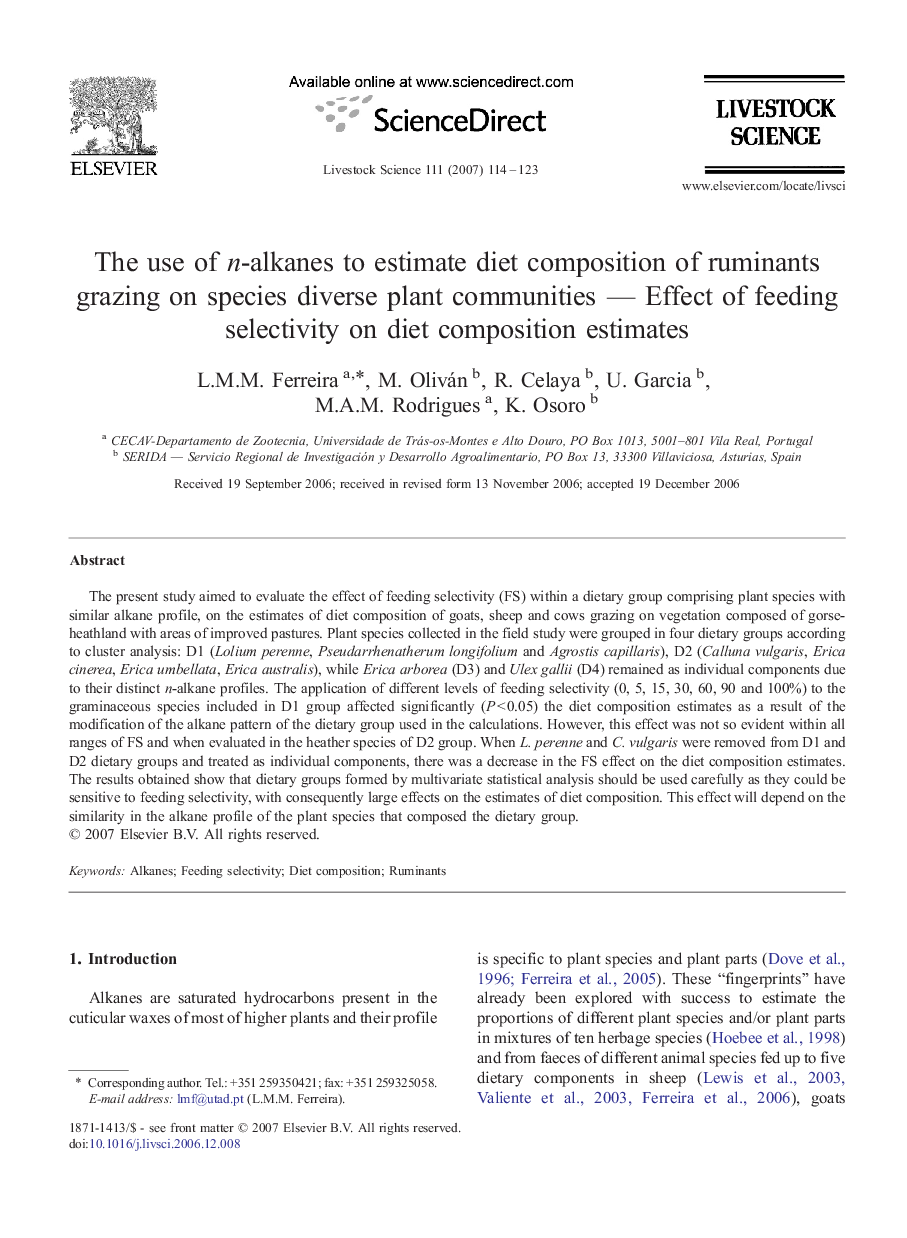| Article ID | Journal | Published Year | Pages | File Type |
|---|---|---|---|---|
| 2448649 | Livestock Science | 2007 | 10 Pages |
Abstract
The present study aimed to evaluate the effect of feeding selectivity (FS) within a dietary group comprising plant species with similar alkane profile, on the estimates of diet composition of goats, sheep and cows grazing on vegetation composed of gorse-heathland with areas of improved pastures. Plant species collected in the field study were grouped in four dietary groups according to cluster analysis: D1 (Lolium perenne, Pseudarrhenatherum longifolium and Agrostis capillaris), D2 (Calluna vulgaris, Erica cinerea, Erica umbellata, Erica australis), while Erica arborea (D3) and Ulex gallii (D4) remained as individual components due to their distinct n-alkane profiles. The application of different levels of feeding selectivity (0, 5, 15, 30, 60, 90 and 100%) to the graminaceous species included in D1 group affected significantly (PÂ <Â 0.05) the diet composition estimates as a result of the modification of the alkane pattern of the dietary group used in the calculations. However, this effect was not so evident within all ranges of FS and when evaluated in the heather species of D2 group. When L. perenne and C. vulgaris were removed from D1 and D2 dietary groups and treated as individual components, there was a decrease in the FS effect on the diet composition estimates. The results obtained show that dietary groups formed by multivariate statistical analysis should be used carefully as they could be sensitive to feeding selectivity, with consequently large effects on the estimates of diet composition. This effect will depend on the similarity in the alkane profile of the plant species that composed the dietary group.
Related Topics
Life Sciences
Agricultural and Biological Sciences
Animal Science and Zoology
Authors
L.M.M. Ferreira, M. Oliván, R. Celaya, U. Garcia, M.A.M. Rodrigues, K. Osoro,
